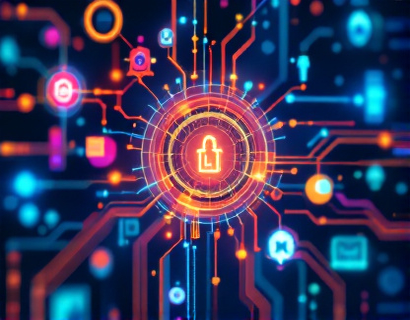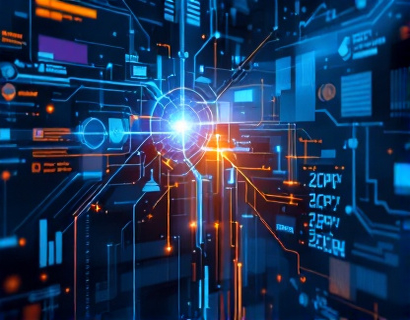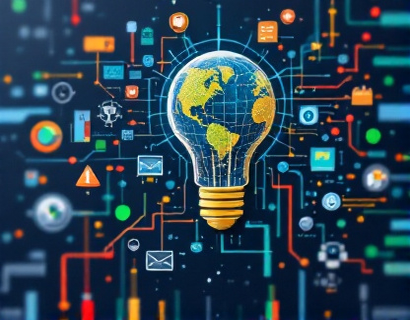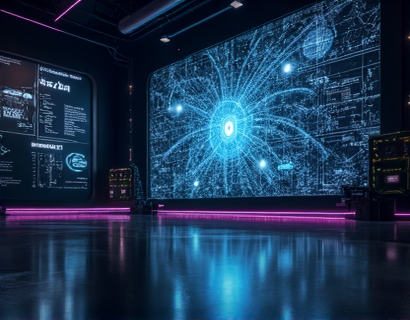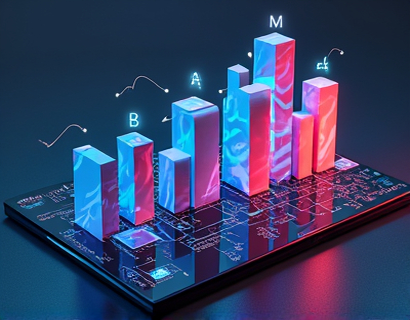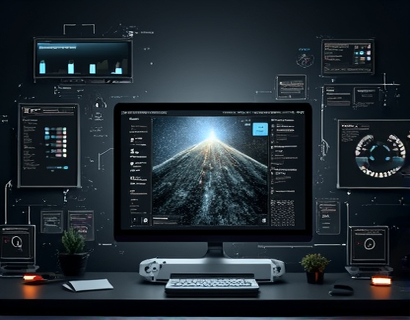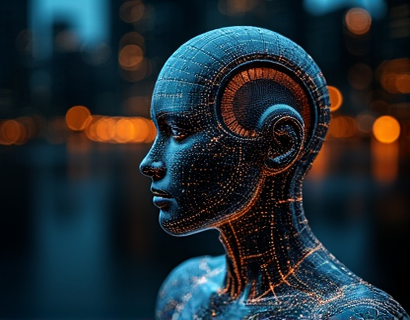Transforming Education with AI-Powered Chatbots: Ensuring Safe and Verified Access to Industry Insights for Students
The integration of artificial intelligence in education has opened new avenues for learning, particularly through the use of AI-powered educational chatbots. These chatbots provide a secure and verified platform for children and students to access specialized industry insights and workshop knowledge. The primary goal is to enhance learning through safe and interactive content, making education more accessible and engaging. This article delves into how these AI-driven tools are revolutionizing the way students interact with educational material, ensuring that the content is both verified and suitable for young learners.
Understanding the Need for Safe Educational Content
The digital age has brought about an explosion of information, but not all of it is suitable or accurate for children and students. The need for a safe and verified platform becomes paramount in this context. Traditional educational resources, while valuable, often lack the interactivity and immediacy that modern students expect. AI-powered chatbots bridge this gap by offering a tailored learning experience that is both safe and informative. These chatbots are designed to filter and present content that is not only accurate but also age-appropriate, ensuring that students can explore complex topics without encountering inappropriate material.
How AI Chatbots Enhance Learning
AI chatbots in education serve multiple purposes. They act as personal tutors, providing instant answers to questions, guiding students through complex concepts, and offering personalized learning paths. By leveraging natural language processing, these chatbots understand and respond to user queries in a conversational manner, making the learning process more engaging. For instance, a student asking about the principles of robotics can receive a detailed explanation along with relevant examples and resources, all presented in a structured and easy-to-understand format.
Moreover, AI chatbots can simulate real-world scenarios, allowing students to apply theoretical knowledge in practical contexts. For example, in a science workshop, a chatbot can guide students through a virtual experiment, providing step-by-step instructions and real-time feedback. This interactive approach not only reinforces learning but also helps in building critical thinking and problem-solving skills.
Verified Content for Trustworthy Learning
One of the most significant advantages of using AI-powered chatbots in education is the emphasis on verified content. In an era where misinformation is rampant, ensuring that the information students access is accurate and reliable is crucial. These chatbots are programmed to source content from reputable and credible sources, such as academic journals, industry reports, and official educational institutions. This ensures that the information provided is not only up-to-date but also peer-reviewed and fact-checked.
Additionally, the chatbots can be configured to exclude content that does not meet specific quality standards. This might include filtering out outdated information, biased perspectives, or content that lacks scientific backing. By maintaining a high standard of content verification, these chatbots help build trust between students, educators, and the educational resources they use.
Interactive and Customizable Learning Experiences
The interactivity of AI chatbots is a key feature that sets them apart from traditional educational tools. Students can engage in two-way conversations, ask follow-up questions, and receive immediate feedback. This dynamic interaction keeps students engaged and motivated, as they feel more involved in the learning process. For instance, a student interested in environmental science can ask about climate change, receive a comprehensive explanation, and then ask for specific examples or case studies related to their region.
Customization is another significant aspect. AI chatbots can adapt to the individual learning pace and style of each student. By analyzing user interactions, the chatbot can identify areas where a student might be struggling and provide additional resources or exercises to reinforce understanding. This personalized approach ensures that no student is left behind, catering to diverse learning needs and abilities.
Industry Insights and Professional Connections
Beyond core academic subjects, AI chatbots can provide valuable insights into various industries, helping students explore potential career paths. For example, a student interested in technology can engage with a chatbot to learn about the latest trends in artificial intelligence, cybersecurity, and data science. The chatbot can offer detailed explanations of these fields, highlight key skills required, and even provide information about relevant workshops and courses.
Moreover, these chatbots can facilitate connections between students and industry professionals. By acting as a bridge, the chatbot can introduce students to mentors, guest speakers, or even potential internship opportunities. This not only enriches the learning experience but also helps students build a professional network early on, which is invaluable for their future careers.
Ensuring a Safe Online Environment
Safety is a top priority when it comes to educational platforms, especially those targeted at children and students. AI-powered chatbots are designed with multiple layers of security to ensure a safe online environment. This includes strict data privacy policies, encryption of user data, and compliance with regulations such as the Children's Online Privacy Protection Act (COPPA). The chatbots are programmed to monitor and filter user interactions, preventing any inappropriate content or interactions.
Furthermore, the chatbots can be configured to limit the types of queries and responses that are allowed. For instance, they can be set to avoid discussing sensitive topics or providing information that could be misused. Parents and educators can also have control over the chatbot's settings, allowing them to tailor the experience to their specific needs and concerns.
Enhancing Engagement Through Gamification
To make learning even more engaging, AI chatbots can incorporate gamification elements. This approach transforms educational tasks into fun and rewarding activities. For example, a student completing a series of history quizzes can earn points or badges, which can be tracked and displayed on a virtual leaderboard. This not only motivates students to learn but also fosters a sense of competition and achievement.
Gamification can also be used to create interactive simulations and puzzles that reinforce learning objectives. By making the learning process enjoyable, students are more likely to stay engaged and retain the information they encounter. This method is particularly effective for subjects that might otherwise be perceived as dry or difficult, such as mathematics or programming.
Supporting Special Educational Needs
AI chatbots have the potential to be inclusive tools, supporting students with special educational needs. These chatbots can be programmed to adapt to different learning disabilities, providing content in various formats such as text, audio, and visual aids. For students with speech or language impairments, the chatbot can facilitate communication through text-based interactions, ensuring that they can fully participate in the learning process.
Additionally, the chatbots can offer personalized support, adjusting the difficulty level of tasks based on the student's progress. This ensures that students with different learning paces can advance at their own speed, without feeling overwhelmed or underchallenged. The ability to provide immediate feedback and adjustments makes AI chatbots an invaluable resource for special education.
Building a Community of Learners
AI-powered chatbots can also foster a sense of community among students. By creating forums and discussion groups within the chatbot platform, students can collaborate on projects, share resources, and discuss topics of interest. This peer-to-peer learning environment encourages collaboration and social interaction, which are essential skills for the 21st century.
Teachers and educators can monitor these discussions, providing guidance and support as needed. This dual approach ensures that students receive both peer feedback and expert guidance, creating a well-rounded learning experience. The chatbot can also facilitate group activities and assignments, making it easier for students to work together, even in remote settings.
Continuous Improvement and Adaptation
The beauty of AI-powered chatbots lies in their ability to learn and adapt over time. Through machine learning algorithms, these chatbots can analyze user interactions and feedback to continuously improve their performance. This means that the quality of the content and the effectiveness of the learning experience can only get better as more users engage with the platform.
Educators and developers can also provide updates and new features based on emerging educational trends and technological advancements. This ensures that the chatbot remains relevant and effective, always aligned with the latest educational standards and practices. The iterative nature of AI development allows for ongoing refinement, ensuring that the platform remains at the forefront of educational innovation.
Conclusion
AI-powered educational chatbots represent a significant leap forward in providing safe, verified, and interactive learning experiences for students and children. By offering access to specialized industry insights and workshop knowledge, these chatbots not only enhance the educational journey but also prepare students for the challenges of the future. As technology continues to evolve, the potential for AI in education is vast, promising a more engaging, personalized, and secure learning environment for all.



